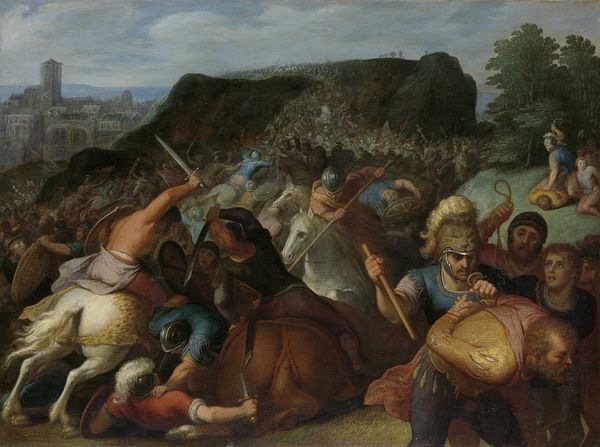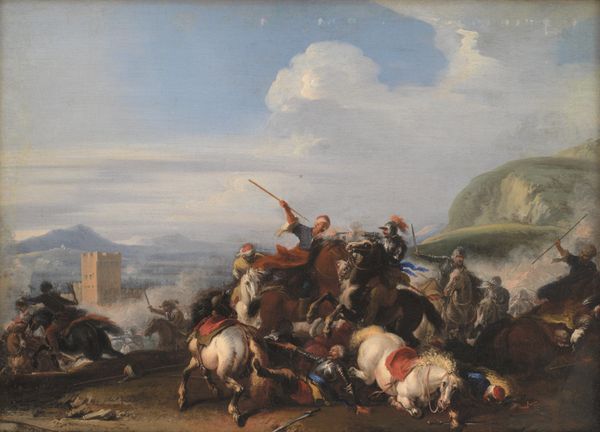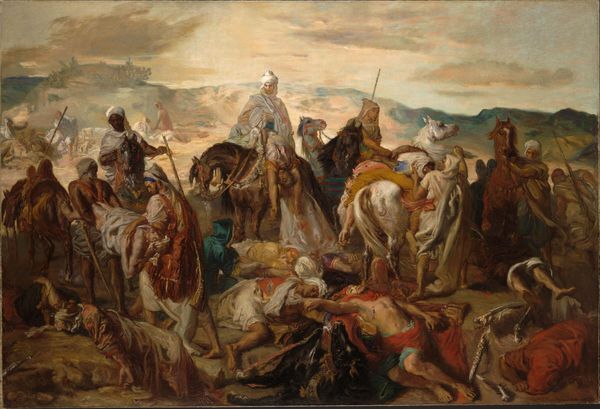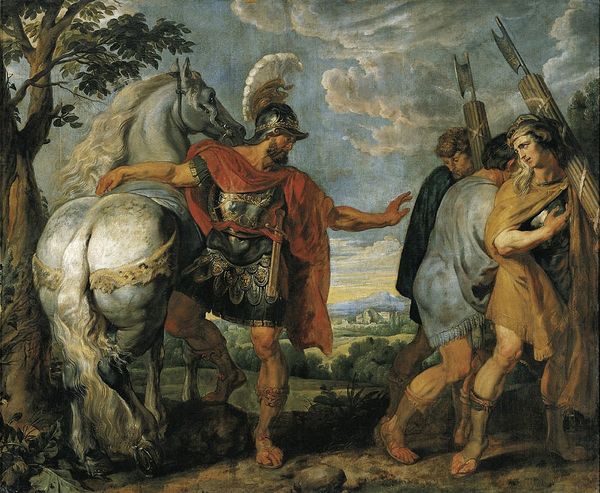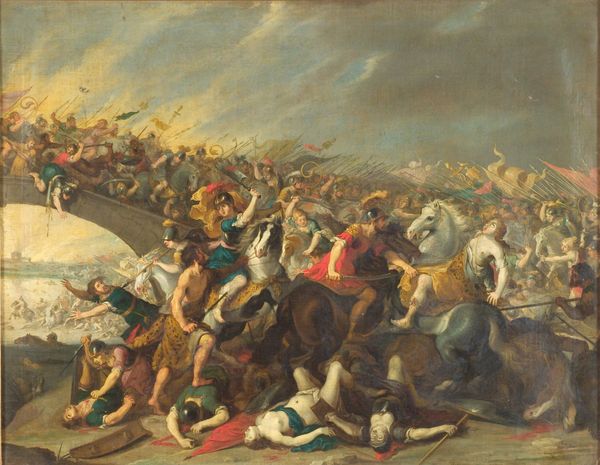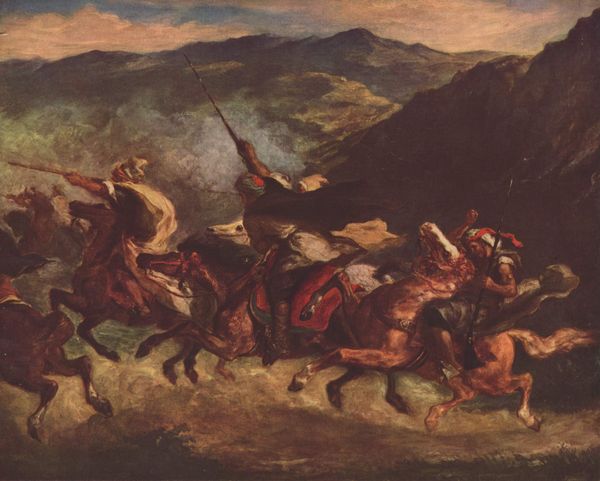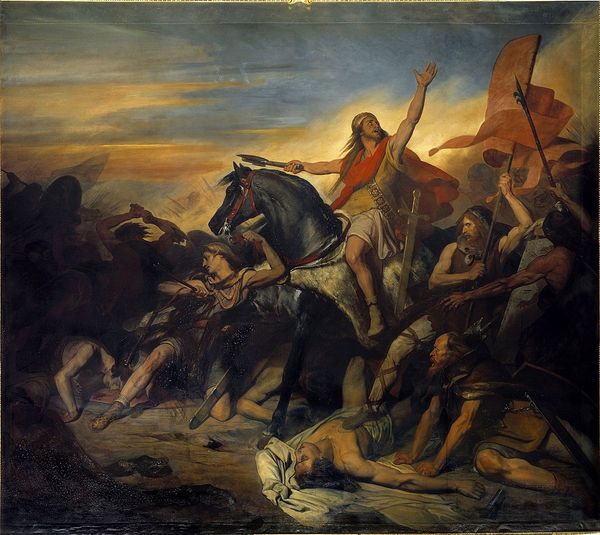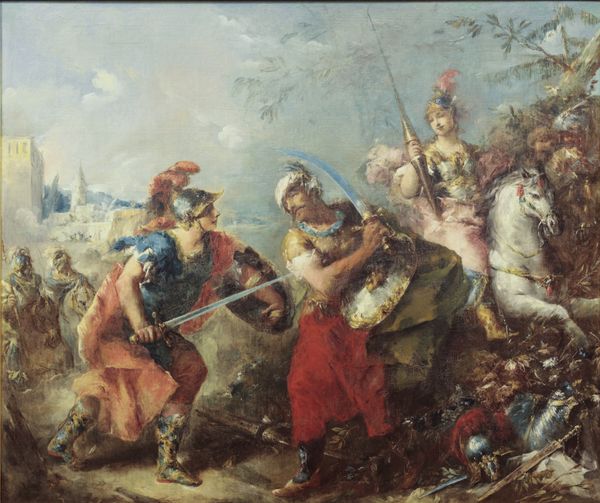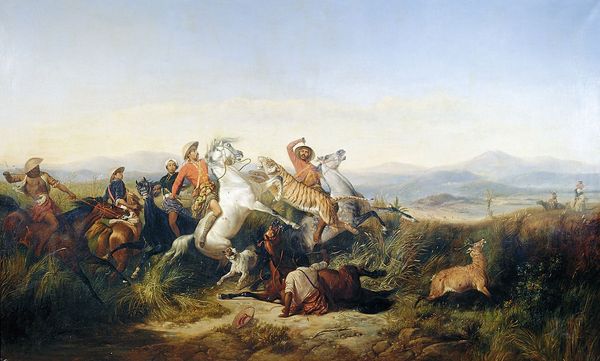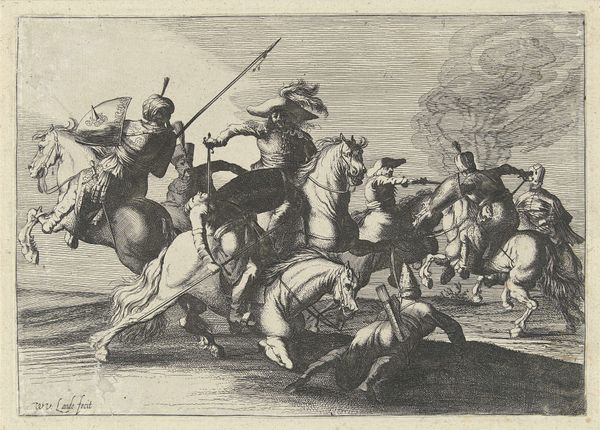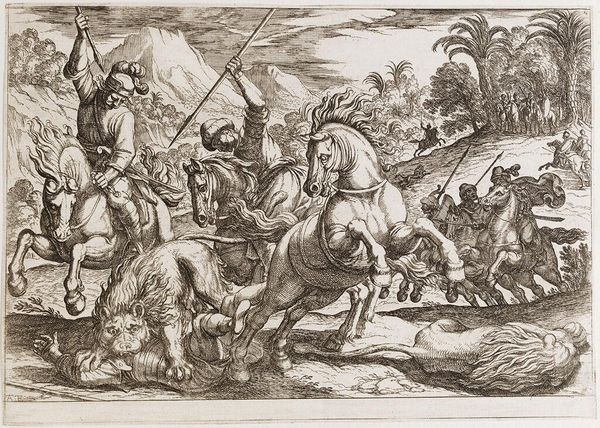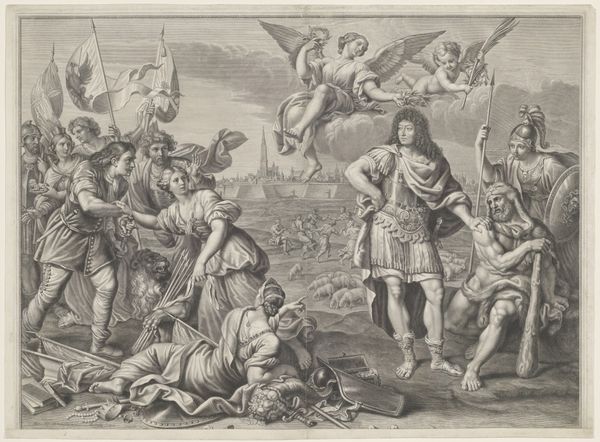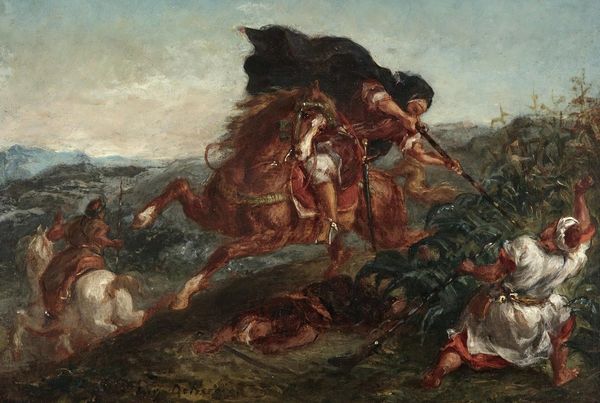
The Romans nearly Overpower the Army of Julius Civilis through the Treachery of a Batavian 1600 - 1613
0:00
0:00
ottovanveen
Rijksmuseum
oil-paint
#
allegory
#
narrative-art
#
baroque
#
oil-paint
#
figuration
#
oil painting
#
history-painting
Dimensions: height 38 cm, width 52 cm
Copyright: Rijks Museum: Open Domain
Otto van Veen painted this scene of betrayal with oil on canvas. The Roman standards, emblazoned with "SPQR," Senatus Populusque Romanus, the Senate and People of Rome, were potent symbols of the Republic’s authority and military might. Consider how Julius Caesar himself employed such symbols to rally his troops, promising glory and plunder under the Roman banner. This standard's appearance is a stark contrast to the bare buttocks of the Batavian traitor. This indecent exposure, a motif of shame, harkens back to ancient fertility rites, where the baring of buttocks was thought to ward off evil. Yet here, it’s twisted into a symbol of betrayal. Notice its appearance in other contexts, such as depictions of the mocking of Christ, where the exposure signifies ultimate humiliation. In this painting, the emotional resonance lies in the dishonor of the traitor, a primal fear of betrayal that engages us on a subconscious level. Observe how this gesture resurfaces, evolving and taking on new meanings, yet ever retaining the potency of shame and exposure.
Comments
rijksmuseum about 2 years ago
⋮
In 1613, the Dutch parliament (States General) commissioned Otto van Veen to paint twelve paintings depicting the revolt of the Batavians against the Romans in AD 69 and 70. These were displayed in Binnenhof, the central government building in The Hague. In the early years of the Dutch Republic, many compared their own revolt against Spain to the Batavian uprising.
Join the conversation
Join millions of artists and users on Artera today and experience the ultimate creative platform.
